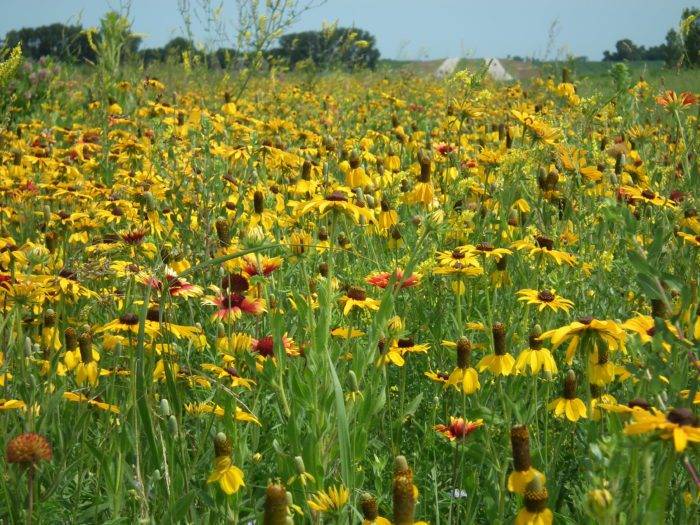

For more than 35 years, the Farm Bill’s Conservation Reserve Program (CRP) has paid farmers and landowners to take highly erodible and other environmentally sensitive lands out of crop production and enroll them in conserving practices instead. Through CRP, the US Department of Agriculture (USDA) pays farmers to set aside land for grass or tree cover for a period of 10 or 15 years. This set aside period helps keep soil in place, prevent water pollution, and create beneficial wildlife and pollinator habitats.
This May, the Farm Service Agency announced that it had accepted over 2 million new acres into the FY22 CRP General Signup. This included more than 1.75 million re-enrolled acres, over 85% of the total accepted.
CRP General Signup
Historically, general signups have occurred whenever USDA determined that there was sufficient demand and acres available to warrant a general enrollment. Under the terms of the 2018 Farm Bill, however, USDA has been directed to hold a general signup enrollment each year.
For many conservation-minded farm owners, CRP can provide much-needed financial relief and serve as an environmental lifeline. Many farmers feel pressure to plant on marginal and highly erodible lands in order to maximize the return on their arable land. This is an understandable, short-term financial decision, but it can have long-term detrimental effects on the health of the farm and the surrounding environment, and can often actually lower profits per acre.
In order to best serve producers while safeguarding shared natural resources and taxpayer investments, USDA must manage CRP in a manner that maximizes environmental benefits. To accomplish this, applicants are ranked using the Environmental Benefits Index (EBI) to help determine how much ecological good each bid creates. The maximum possible score is 545 and each signup includes a minimum required score to qualify for enrollment.
The 2021 general signup saw historically low minimum required EBI scores of 175 and 165 in select states. This means that the 2021 signup created far less environmental benefit per acre compared to past signups. Sadly, the recent 2022 signup was only marginally better, with 184 and 174 used as the EBI minimum scores. Taken together, these most recent signups use the lowest EBI minimum scores in the program’s history, for ranking CRP applications.
The National Sustainable Agriculture Coalition (NSAC) is alarmed to see this new trend of spending public dollars on low-quality conservation. NSAC believes it is a poor attempt to reach the 25.5 million-acre cap for CRP as a whole. We hope the Administration works toward robust enrollments in other CRP signups this year, like the Continuous Signup and the Conservation Reserve Enhancement Program (CREP). These promise greater environmental benefits per acre enrolled than offers accepted to the General Signup that clear such a low environmental bar. For future General Signups, we encourage the Administration to reverse this concerning trend and use a higher minimum EBI score to ensure environmentally valuable acres fill out the CRP program.
The post CRP Signup: Scraping the Bottom of the Barrel appeared first on National Sustainable Agriculture Coalition.